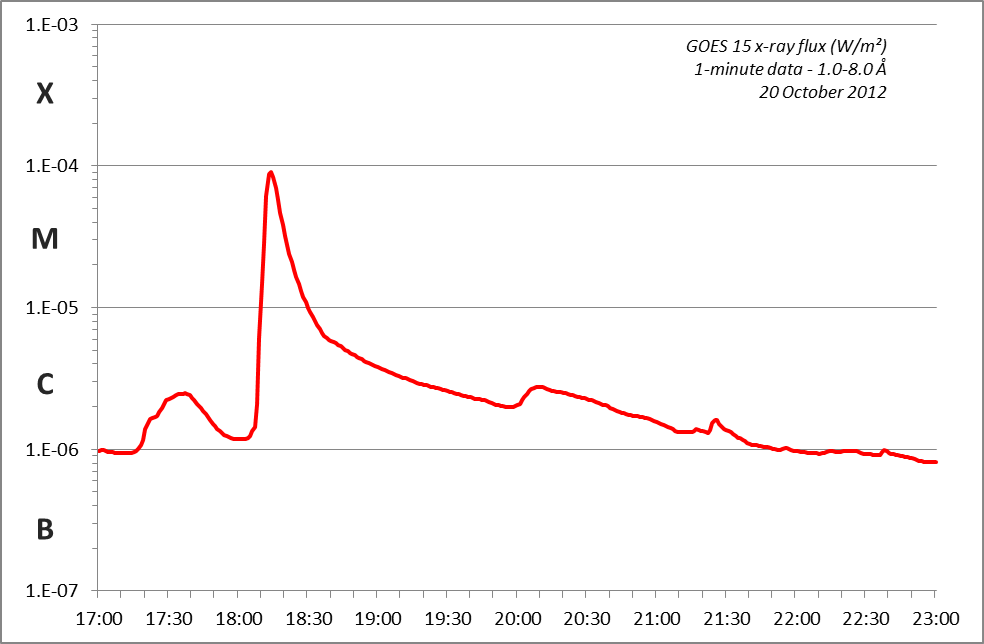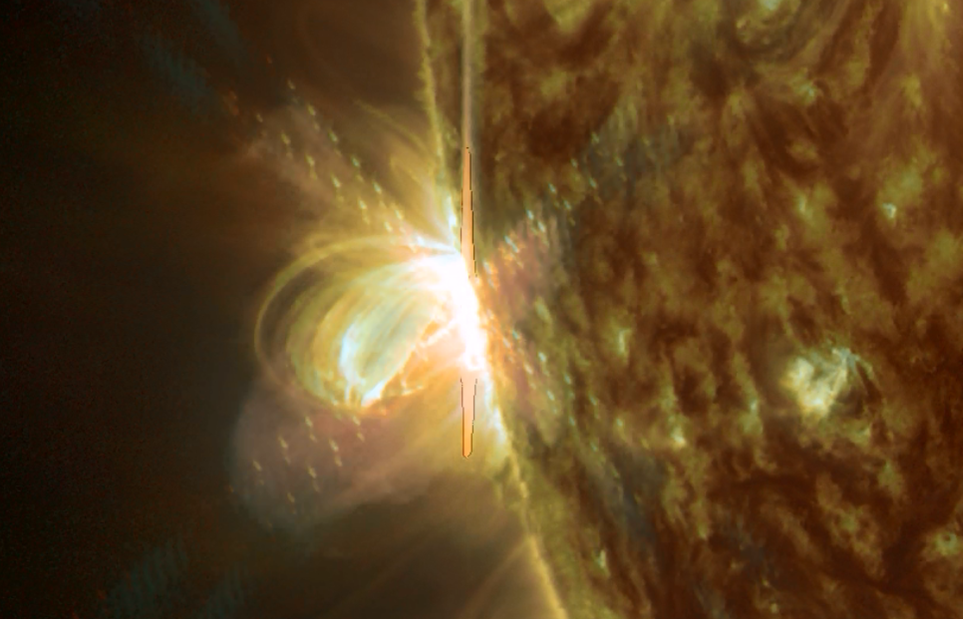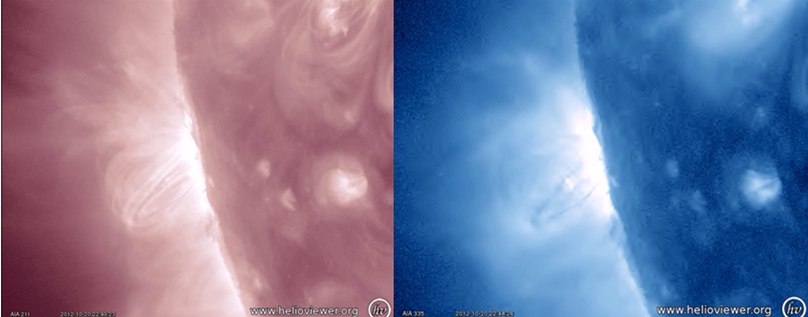On 20 October, the Sun unleashed an impulsive M9-flare. This flare peaked at 18:14UT in sunspot group NOAA 1598, which was at the time of the blast still partially behind the southeastern solar limb. One already has to go back to 12 July to find an even stronger flare (X1.4 in NOAA 1520).
The flare did not last long: Starting at 18:05UT, it already had come to its end by 18:19UT. No high-energetic protons were released at the time of the flare, and only a slow and weak coronal mass ejection (CME), directed away from Earth, was associated with it.

The SDO-images provided a really spectacular view of this flaring active region. A movie was created starting with some white light images of NOAA 1598's main spot as it rotated onto the disk. Then follow 4 clips imaging the eruption in successively higher temperatures: 50.000° (AIA 304), 650.000° (AIA 171), 2 million degrees (AIA 211) and 2.5 million degrees (AIA 335). The movie ends with a combo-clip combining imagery from AIA 304, 171 and 131 providing a good view of the event throughout the entire temperature range of the transition region and corona. Each clip covers the time frame from 17:00-23:00UT.

Interesting to see is the appearance, oscillation and disappearance of bright coronal loops inside this active region just prior and during the M9-flare. The appearance of these loops is measured in GOES x-ray data as a C2.4-flare peaking at 17:37UT. Other loops to the north of the active region, already visible before the M9-flare, are also oscillating. In response to the M9-flare, these loops can then be seen oscillating as if they were quivering jelly. Similar to the waves from earthquakes being used as an indirect way to probe the Earth's interior, these oscillations of coronal loops are used to indirectly estimate properties of the Sun's hot atmosphere (e.g. magnetic field,…). This domain of study is called coronal seismology.

Around 19:30UT, the first post-flare coronal loops of the M9-flare can be seen forming a bit to the south of the blast site. During the subsequent hours, they evolve into a fascinating series of ever growing loops.

The higher temperature images (especially AIA 335) do not show the individual coronal loops very well, but quite visible is the formation of dark material. The darkness of this material is an indication that its temperature is substantially less than 2.5 million degrees.

 |
 |





